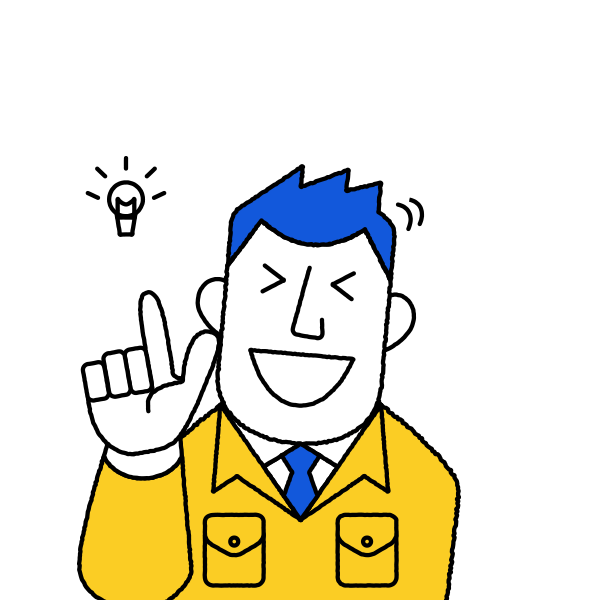Do you know what the knacks of overseas exhibits are?
After the first overseas exhibit, it seems many people are troubled because they feel they cannot go any further for various reasons.
To ensure your overseas exhibit is a success, there are a few knacks that are handy to know in advance.


Introduction
Some of the troubles/concerns we often hear about from SMEs who exhibit overseas are shown here;
- Our product was highly praised at an overseas exhibition, but we didn’t receive as many orders afterwards as we thought we would
- We received our first order after exhibiting at a fair, but no repeats
- I don’t know how many times we need to exhibit before our product sells
- We won’t find a good distributor unless we exhibit for several years
- We couldn’t make money out of the exhibit unless we received a subsidy from the government
For example, does the below flow apply to you?
- Hand out catalogs at the exhibition venue
- Explain your product
- Exchange business cards
- Send thank-you emails after returning to Japan
There are little knacks handy to know in order to make your overseas exhibit a success.
 I am going to exhibit at an overseas fair for the first time. How should I prepare?
I am going to exhibit at an overseas fair for the first time. How should I prepare?
I will explain the preparations you should make for exhibiting at an overseas fair by referring to both tangible aspects and intangible aspects.
Preparation of tangible aspects
First, let’s check the flow of how to prepare for (and withdraw from) overseas exhibits.
(The below tasks are essentially performed in English. There are dealers in Japan for international freight forwarders.)
- Submit application for exhibition to the exhibition organizer
- Order the various work tasks (electrical hook-up/loading & unloading) as per the exhibitor’s manual
- Order the booth construction company to construct your booth
- Organize transportation of exhibit items from Japan to target country
- Transporting (exporting) small samples and sales tools out of Japan using various methods, including carry-on baggage of your company’s attending staff
- Immediately requesting additional work if inadequacies are discovered in the ordered work or booth construction upon arrival in the locality
- Storing exhibit goods at your liability from the start to the end of the exhibition
- Removing the exhibit goods from the venue on the final day and transporting back to Japan
3*If you aren’t planning to order a booth construction company to construct your booth because, for example, you only plan to order the bare minimum (i.e. tables and chairs) and bring everything else you need, such as exhibit tools, from Japan yourself, then there is no need to place a construction order. Even so, you may still need to order electrical hook-up work and storage/retrieval work (sending samples separately, etc.), therefore be sure to check with the exhibition organizer first.
4*Goods transported internationally for exhibition purposes can either go through normal customs procedures or take advantage of ATA Carnet. ATA Carnet is an international customs document allowing the tax-free and duty-free temporary import of goods. However, money and effort are needed to leverage ATA Carnet. We advise consulting with an international freight forwarder before deciding whether you should or shouldn’t utilize ATA Carnet.
ATA Carnet
4*When transporting your exhibit goods, make sure to refer to the exhibitor’s manual issued by the exhibition organizer and use the designated company, if one exists. If you use another company not listed in the manual, your goods may not be accepted upon arrival.
5*Small exhibit goods can be transported in carry-on baggage. To avoid a fluster at the departure counter on the day of your flight, be sure to inform the airline of the contents of your baggage in advance to ensure there are no issues. Make sure to take records of communication with the airline with you to the airport.
If there are a lot of samples, or they are large and heavy, send them together with the exhibit goods rather than in company personnel’s baggage. This may mean the items will be transported by ship so you need to make sure they are dispatched from Japan at least two months before the exhibition.
6*In many cases you are unable to enter the venue until the day before the start of the exhibition, however be sure to check the booth construction and electricity hook-up in advance and make sure your booth number display and company name/number on the venue map are correctly shown. If there are any mistakes, be sure to contact the exhibition organizer immediately to request correction. (This is because it often takes time for the correction to be made.)
7*During the exhibition, there is a risk of the exhibit items and your PC being stolen. If you have a back area to your booth, be sure to secure the exhibit goods with a chain and lock for storage when you are absent from the booth. If there is no such space available, consider taking the exhibit goods back to the hotel with you at the end of each day.
8*If there is a high expense involved in transporting the exhibit goods, there is the option of selling them on the last day in the locality or leaving them in the care of a local affiliate.
Preparations of intangible aspects
This explanation assumes that you have already achieved the below conditions.
- Do you have a business model?
- Have you considered risk management?
- Are you managing your intellectual property?
- Do you know about import/export regulations/standards?
- Do you know how to carry out trade administration tasks?
- Can you communicate in business English?
- Can you adapt to other cultures?
- Is your overseas marketing functioning?
- Do you have a global website?
- Are you achieving overseas branding?
The details of the below points will be provided later.
- Preparing and practicing Q&A for when interacting with customers
- Completely preparing tools for business talks.
 I can explain my product but what else will I be asked?
I can explain my product but what else will I be asked?
Be sure to prepare and practice Q&A in advance so you will be ready to interact with customers at your booth.
The questions people ask you at overseas exhibitions are practically the same as the ones people ask you at exhibitions in Japan. These include questions about your company, your production, distribution, rivals, and the industry overall. However, your responses will differ to the ones you give in Japan.
The buyers and distributors that attend overseas exhibitions already have information about similar products (similar to your company’s), similar companies, distribution, rivals, the industry, and market needs regarding the locality. You only have information closely related to your company for the Japanese market. It is not a good idea to attend the first day of the exhibition in this state.
You should at least try to research in advance as much as you can about local information that the visitors will already know. Then you can make hypotheses before attending your booth.
Some hypotheses could be:
- XX type of customer will probably visit my booth with YY type of need
- The customer is currently facing this kind of problem, therefore will visit the exhibition with XX expectations
- The budget and purchase timing are XX and YY, so the customer will probably make comparisons and considerations based on such-and-such intentions
You can derive the answers to your hypotheses by talking to visitors and extracting information from them.
In other words, the important point of interacting with visitors at your booth is not what they will ask you, but rather the extent to which you can verify your own hypotheses.
>7 Knacks for a Successful Overseas Exhibition
>[Overseas Exhibitions] INSIGHT 07 Preparations
 Is it okay not to send thank-you emails after an overseas exhibition?
Is it okay not to send thank-you emails after an overseas exhibition?
Nothing will really change whether you send thank-you emails or not.
This is because, just because you sent a thank-you email, the recipient is not likely to reevaluate you as a polite company with good social etiquette, nor likely to start business talks or place an order because they suddenly recall what type of product you sell.
Buyers and distributors are very busy, therefore they won’t listen to something they could have listened to at the exhibition itself. Rather than leisurely reading a thank-you email after the exhibition and considering your product, they will proceed with business talks or place an order during the exhibition. Alternatively, they will ask you everything they want to know to place an order then and there on the spot.
As such, it is more important and mutually beneficial that the exhibitor is able to immediately answer any questions asked of them by buyers or distributors during the exhibition, or follow up the next day with either answers or a proposal when the exhibitor (you) can’t provide immediate answers.
As such, it is essential that you completely prepare tools to enable you to immediately answer overseas sales talks.
Example of sales talk tools(all of the below must be in English or the local language)
- Price list (line sheet)
- Catalog(look-book)
- Brand book (by product)
- Website
- Business cards
- Videos
- Summary of media coverage
- Samples
Please remember that completely preparing sales talk tools and disclosing all information to exhibition-goers are two entirely different things, so be sure to clearly separate those materials that can be handed over and shown to all exhibition-goers from those materials that cannot be disclosed to everyone, such as data to be provided individually depending on the nature of the sales talk with the representative of the potential customer company.
One good approach is to prepare a sales talk sheet and jot down how you actually responded, however the exhibition-goers reactions can be divided into the below three;
- No reaction
- Merely praise, or just “keep in touch” level (will get in touch if there’s something in particular)
- Concrete business proposition(a proposition for which the budget is currently secured or has been secured in the past year)
Concrete propositions vary in tempo and speed; those that begin with registration to the vendor list and progress gradually over the long-term, those that suddenly escalate to concrete propositions during discussions in the exhibition booth,
and those where you are suddenly visited by a delegate from a buyer that has already done their research, they ask you a series of questions and, if they get satisfactory answers, suddenly hand you their business card and tell you to expect an order from them sometime in the near future.
Be sure not to spend to much time interacting with visitors to your booth whose reaction may likely correspond with 1 and 2 above (no reaction/merely praise) and instead do your best not to miss potential opportunities described in 3 (concrete propositions).
Due to the fact that there will be few (practically zero) opportunities to utilize information regarding the booth visitors with the reactions described in 1 and 2 above, it is most likely more cost effective to concentrate your efforts into finding and supporting visitors to your booth who will have the reaction described in 3 above.
There sure are a lot of preparations that need to be made.
Knacks for overseas exhibitions…perhaps it’s a case of easier said than done?
But, if we are going to exhibit, then it would be best if we could increase sales from the outset!
That’s the spirit!
When you attend your booth, don’t forget to take order forms for buyers.
Okay, the next section is about overseas sales!

